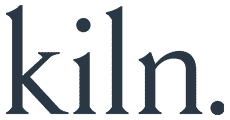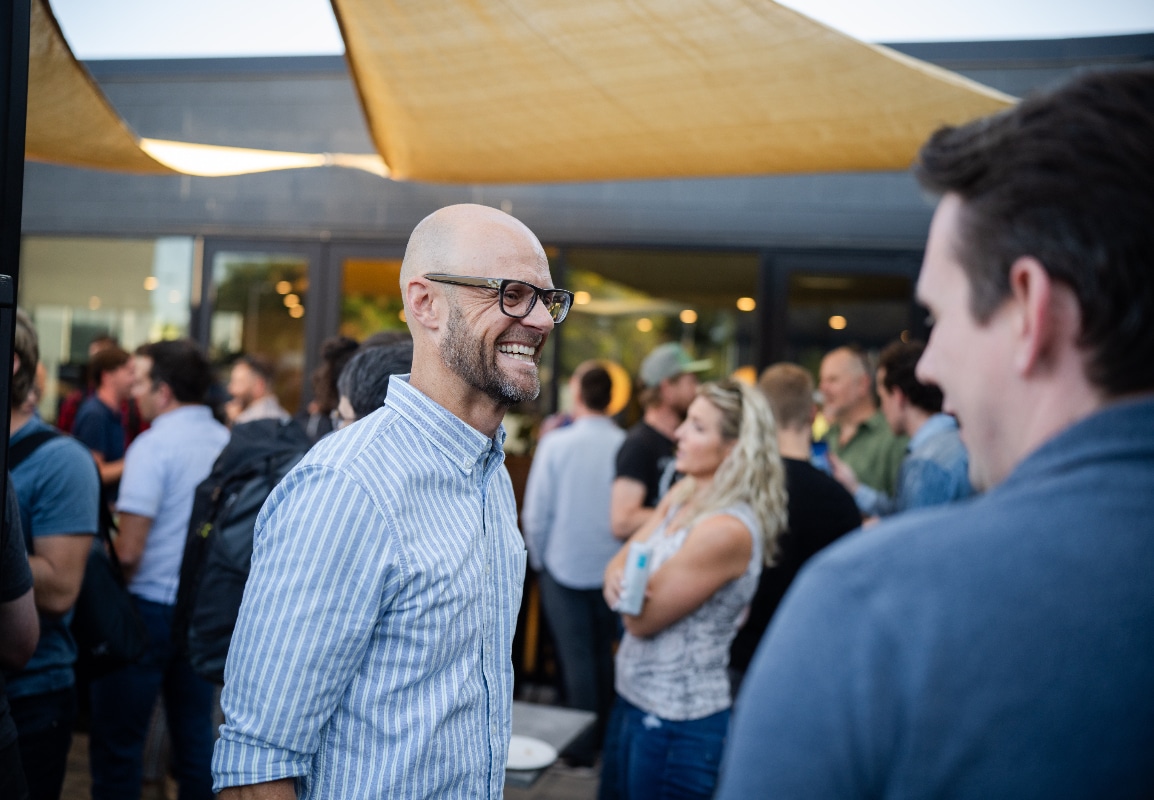Cattle Ranching Reimagined
For cattle ranchers across the US, time is the scarcest resource.
Cattle ranching demands around-the-clock commitment. Justin Wells, the US Country Manager at Halter, puts it bluntly: “Cows don’t just disappear on the weekends. They still need to be checked on and moved. Cattle ranching is hard, backbreaking, 24/7 work.”
Every hour spent moving a fence or chasing a stray cow is time pulled away from family, rest, or higher-value work.
That’s why companies like Halter, a member at Kiln Boulder, are redefining what’s possible in agriculture. Their virtual fencing technology lets ranchers guide herds with an app.
The result? Less time on manual labor, more precision in pasture management, and data-backed insights that help ensure grazing is efficient for the herd and sustainable for the land.
How Halter Works & Its Impact on Ranchers
Instead of relying on traditional fences, Halter equips cows with sleek, solar-powered smart collars. These collars use audio cues and gentle, low-emission pulses to guide the cows into or out of virtual boundaries set by the rancher through an app. Cows are intelligent animals who pick up these signals faster than most people expect, quickly learning to “read” the cues and respond with ease. In practice, that means a rancher can create a new boundary and move cows to fresh grass without even leaving the house.
With Halter, ranchers can implement rotational grazing that improves pasture health, reduces overgrazing, and locks carbon into the soil. Using the app insights, ranchers can fine-tune their grazing strategy with data instead of guesswork. They learn how long to leave a certain number of cows on a given plot of land before they overgraze and harm the grass roots. This feedback loop ensures sustainable ranching. Cows benefit from better forage while ranchers save countless hours otherwise spent checking fences or driving herds.
As Lauren Sizemore from Lone Star Ranch explains, “We knew that we wanted to do a better job rotationally grazing our cattle. We knew it was the best for our rangelands but we have a difficult time with our physical fencing. Halter has given us a tool where we can actually rotationally graze the way we want to, and have been trying to do for three generations.”
One Wyoming rancher reported grazing the same number of cattle on half the land he once needed, doubling capacity. Other ranchers call Halter to tell them about the personal wins the app has afforded them.
Justin recounts, “As soon as they start using Halter, we get stories saying, ‘I went and picked my kids up from daycare’; or ‘I went to my son’s football game’; or ‘I went on vacation, sat on a beach in Florida and was able to check on my cows from my phone.’”
Backed by $100 million in new funding, the New Zealand company has continued its expansion into the U.S., where there is a market of more than 30 million beef cattle. At a time where cattle ranches are facing labor shortages due to increased immigration regulation, this technology is a welcome relief.
Thanks to Halter, Lauren has been able to drastically reduce both labor and material costs on her ranch. “This spring I was able to build seven miles of internal fence line with Halter. Knowing that fence lines cost around $30,000 per mile, that’s $210,000 worth of fencing that I couldn’t have built without Halter.”

Leading Halter’s U.S. Expansion: Insights from Justin Wells
As US Country Manager, Justin Wells joined Halter to serve a community that, while not historically tech-forward, stands to gain immensely from innovation. Growing up in rural Michigan gave him a deep connection to rural life, and his tech background sparked a passion for ag-tech solutions that ease ranchers’work.
Scaling Halter into the U.S. market has presented unique challenges and opportunities. With cattle across such diverse climates and ranching practices, Justin emphasizes that listening to the ranchers is essential. He notes “Having our ear as close as it is to our customers is probably the best way to evolve our product over time.”
One creative way to use Halter technology came directly from a rancher himself. He uses the LED collar lights to indicate cows in heat. This feature wasn’t advertised for that use, but Halter has now integrated it into its solution.
Justin highlights the importance of company culture. He says, “Don’t be afraid to set what you want the culture of a company to be, and then to stand up for that culture. When I say culture, I’m not saying the ‘fun vibes,’ I mean the standards you hold yourself to as a company.” Justin expressed pride in Halter’s commitment to only hiring individuals who embody their operating principles, ensuring that the company delivers its best for its customers.
Justin also reflects on the joy it brings him to launch a New Zealand company into an American market. “I’ve made a lot of friends at Halter, and to see how excited they are now to be in the U.S.—how proud they are of their heritage—I’m doing it for those folks.” For him, leadership isn’t just about making good company decisions. It’s also about elevating the team goals and honoring their heritage.
Why Halter Calls Boulder (and Kiln) Home
For Halter, choosing Boulder, and specifically Kiln, as its U.S. home base was both a practical move and a cultural fit.
Boulder is a hub for forward-thinking companies in agriculture, technology, and sustainability, giving Halter access to partners, investors, and talent who share their vision. Operating out of Kiln Boulder amplifies these advantages. The space offers flexibility to grow, from private offices for heads-down work to collaborative areas that fuel big ideas, so the team can scale smoothly as they expand.
Focus rooms and phone booths provide quiet concentration for deep work, and the team enjoys a steady stream of networking events that spark valuable conversations with other innovators.
With built-in amenities, wellness resources, and a vibrant location on Pearl Street, Kiln Boulder enables Halter to stay agile and connected, all while keeping their focus locked into one goal: transforming the future of ranching.

What’s next for Halter?
Justin sees the industry on the cusp of change. “In three to five years, I envision that a significant proportion of the cattle ranching community is leveraging this technology to not only ranch more efficiently, but to actually be more sustainable.”
With Halter’s virtual fencing, rotational grazing can be scaled more effectively, improving soil health and sequestering carbon in measurable ways. In other words, ranchers gain efficiency while the land gets stronger and herds thrive.
Backed by funding and a growing U.S. presence, Halter is poised to expand, deepen partnerships, and build on its culture of innovation. Rather than waiting for the future to arrive, the team is rolling up their sleeves to create it—making ranching more sustainable and efficient, starting today.
Halter chose Kiln Boulder as its U.S. home to grow, innovate, and connect with a community of forward-thinking founders.
If you’re curious to learn more about their work, explore halterhq.com or visit them on Instagram @halterhq.
Want to see the kind of environment that helps companies like Halter thrive? Book a tour today and experience the energy, resources, and community of Kiln Boulder for yourself.













